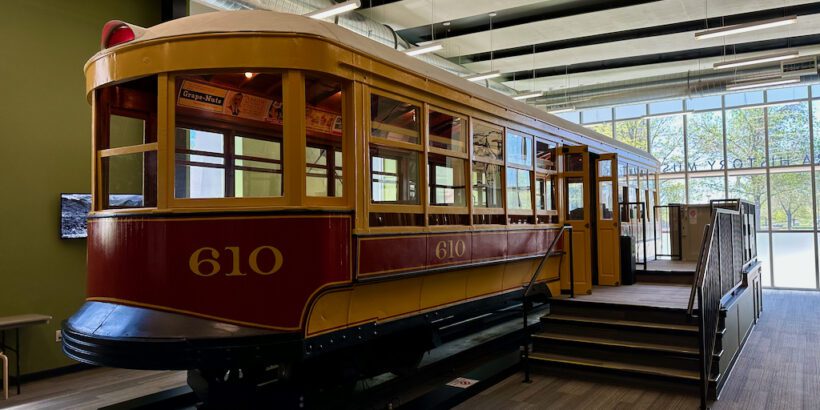Denver and its surrounding cities are home to many museums worth exploring. One museum that you may want to consider visiting is the Aurora History Museum.
It is a compact museum, but it packs a historic punch. If you are ever in the eastern part of the Denver area, you may want to carve out some time to pay it a visit.
In this article, I will give you an idea of what to expect and some of the highlights of the museum to get you excited for your visit.
Table of Contents
What is the Aurora History Museum?
The Aurora History Museum is dedicated to preserving and sharing the history of Aurora and the surrounding area.
It features both permanent and temporary exhibits that cover a wide range of topics, including the early settlers of Aurora, the development of the city, the impact of World War II on the community, and the growth of the aerospace industry.
In addition to exhibits, the Aurora History Museum also offers educational programs, workshops, lectures, and guided tours for visitors of all ages.
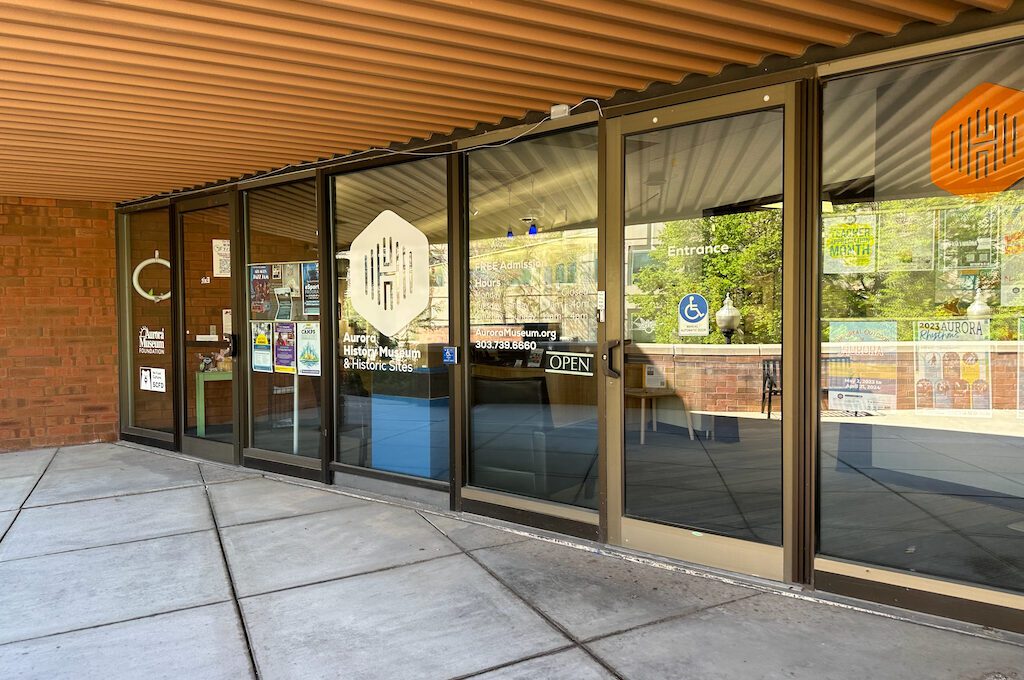
How to visit the Aurora History Museum
The Aurora History Museum is located at 15051 E Alameda Pkwy, Aurora, CO 80012.
It’s found in a vibrant complex that houses various government buildings, including the Aurora Municipal Center and Aurora Police Department Headquarters.
But this area isn’t just about paperwork and law enforcement — it’s actually a picturesque little spot. Take a stroll around, and you’ll come across some interesting sculptures that add a touch of artistic flair to the surroundings.
There is a parking lot adjacent to the main field area and you can find a few parking spots designated for Aurora History Museum guests — just look for the signs (pictured below).
Admission to the Aurora History Museum is completely free but consider bringing along some cash to make a donation or at least purchasing items from the gift shop to help support the museum and all of their incredible efforts.
You can also donate online if you would like.
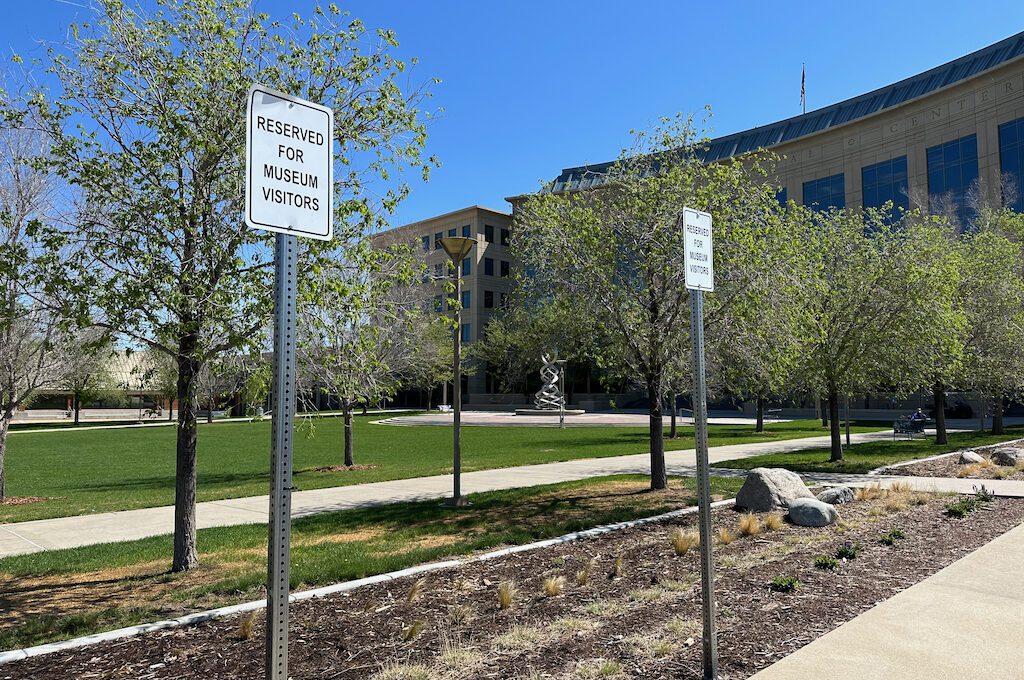
Experiencing the Aurora History Museum
The Aurora History Museum is a smaller installation but it’s still an interesting museum to check out and one that doesn’t require you to dedicate a tremendous amount of time to.
As we stepped through the museum doors, we were greeted with a warm welcome by the friendliest front desk agent. He was like a walking encyclopedia, giving us the inside scoop on everything the museum had in store.
Taking his advice to heart, we kicked off our museum exploration by heading straight to the exhibit on the right, which delves deep into the city’s military roots.
Specifically, it highlights Lowry Air Force Base, named in honor of 2nd Lt. Francis B. Lowry, a Colorado native and World War I aviator, who lost his life in an aircraft accident in 1934.
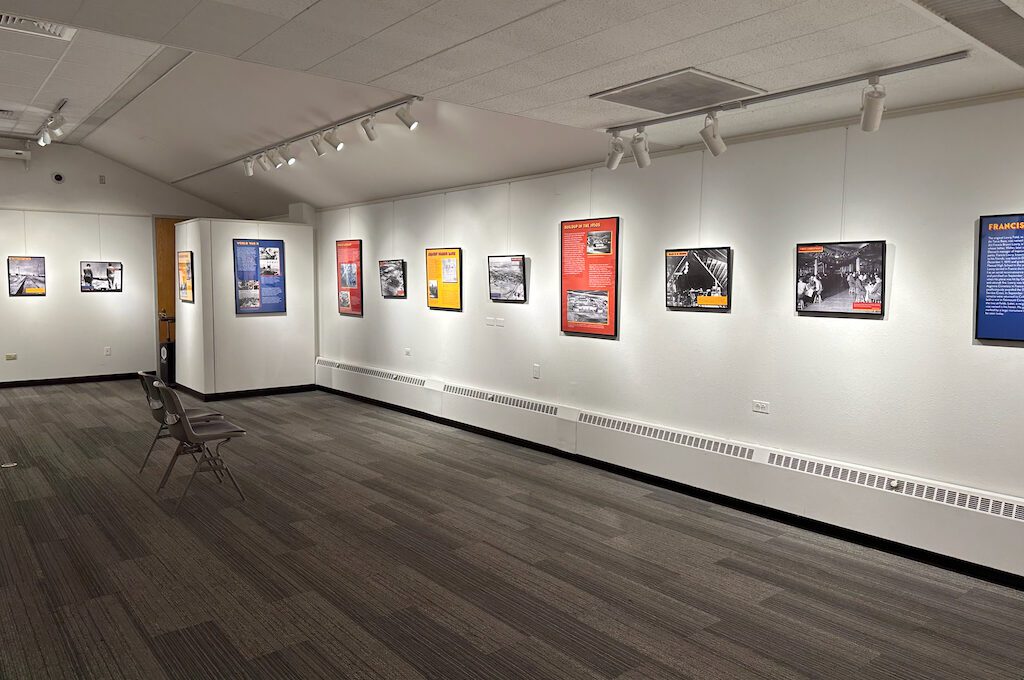
Over the decades the base played a major role in the defense of the United States, including many of the Air Force’s most important training programs. From training for the Boeing B-29 Superfortress to photographic intelligence courses.
A huge Air Force base, it provided Aurora with many jobs, homes, and perhaps most of all: a sense of local pride.
As we delved into the rich history of the base, we discovered its profound impact on the world of military aerial photography. Way back in 1937, when it first opened as the Denver branch of the Army Air Corps Training School, this base helped develop critically important aerial photography techniques used by the military.
Photographs depict the life lived by soldiers during this time. You get a sense of the 57-year evolution of the Air Force Base, the key roles that it played in major conflicts like World War II, and an understanding of how it drove so much growth in the area.
I was also surprised to find out that Lowry Air Force Base was used as a summer White House by President Dwight D. Eisenhower from 1953 to 1955. Equally interesting was its temporary role as the original Air Force Academy.
Finally, I was taken back to our visit to the Titan Missile Museum in Arizona after learning about how Lowry became a part of the U.S.military’s intercontinental ballistic missile (ICBM) program, a land-based nuclear arsenal on American
soil back in the 1950s.
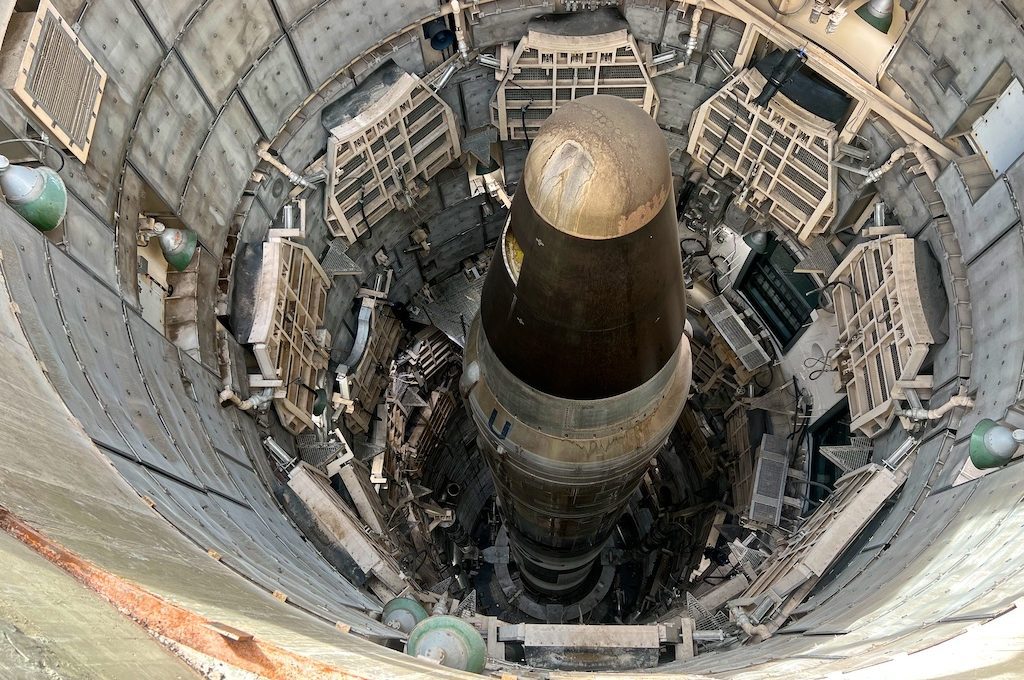
After learning about the storied military past and about some of the historic structures that still can be found today, we checked out the temporary outdoors exhibit which will be running through 2024.
Exhibits go into great detail about the magnificent outdoor opportunities that the city of Aurora has to offer, including its reservoirs, 100+ parks, 24 gardens, nature centers, High Line Canal, and five golf courses.
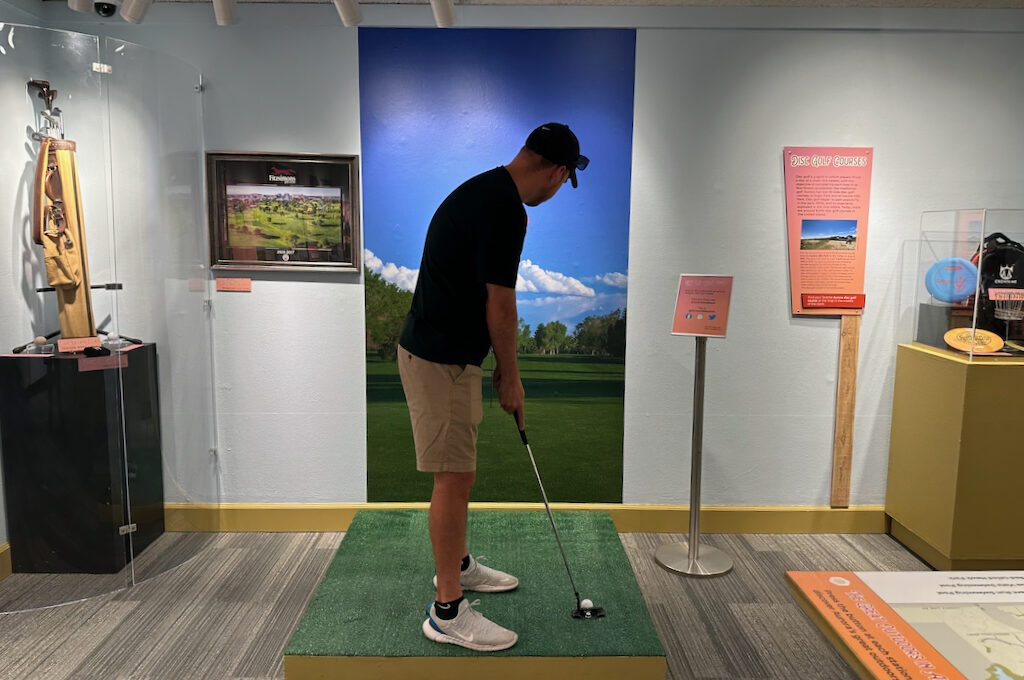
We learned about the different types of wildlife and gained a lot of insight into different trails and other activities available in the area, including those in hot spots like Cherry Creek State Park and Morrison Nature Center.
When people come to Denver they often think about the Rocky Mountains as the main outdoor attraction but there’s a lot offered in the Aurora area as well.
Discover things like bird watching where you can encounter birds like the Lark Bunting, American Goldfinch, White-crowned Sparrow and maybe even Bald Eagles. If you have just moved to the area, this would be a fantastic place to visit to get a sense of the outdoor opportunities.
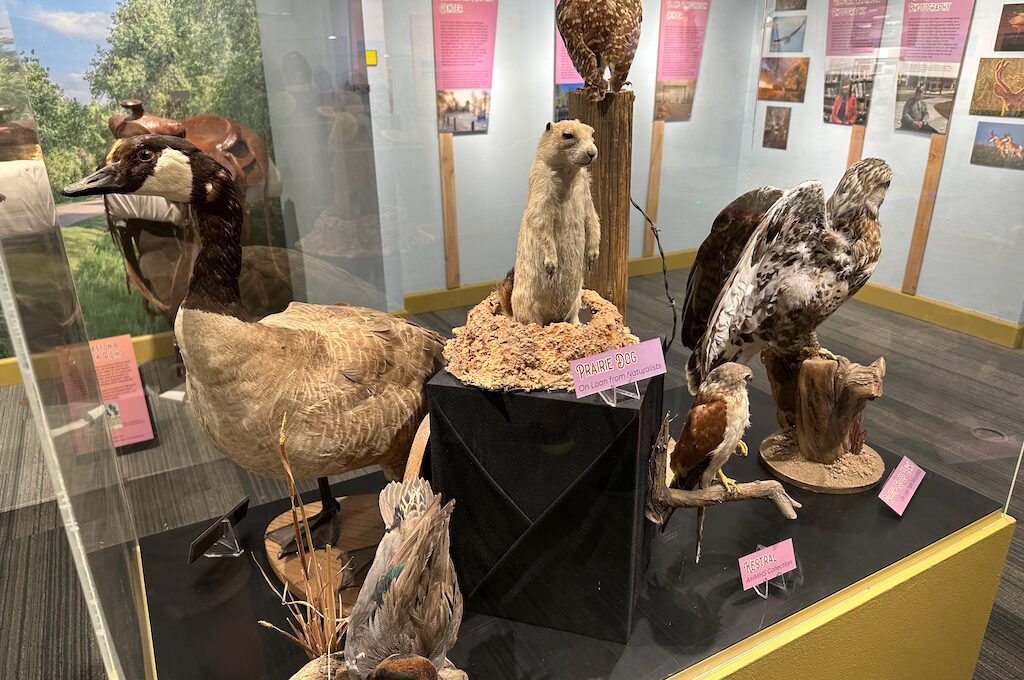
After getting our nature fix, we made our way to the main historical exhibit of Aurora.
Through interestingly designed panels, you’ll be able to learn about the early days of the city and how different neighborhoods and developments came into existence. As things started to takeoff after World War II, read about both the successes and failures along the way.
Exhibits tell more of the story of the areas military’s past which includes that of Fitzsimons Army Medical Center, which started as a recovery site for veterans wounded in World War I and expanded into a nationally-known center for treating tuberculosis.
It was known for offering world-class care to military personnel and the tradition of providing solid medical care has continued. Today, Aurora has one of the largest complexes for biomedical research in the world.
We got a little taste of the history of education and public services including the police and firefighters which took me back to our visit a few days prior to the Firefighters Museum in Denver.
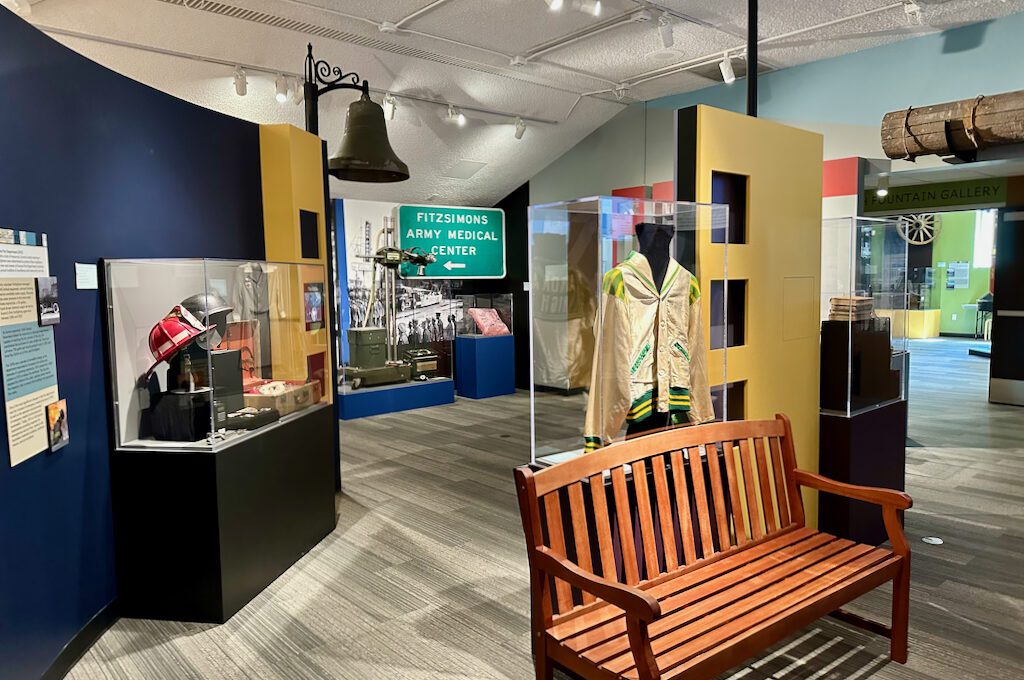
Eventually we made it to the transportation exhibit which touches on subjects like the early pioneer travelers heading through places like the Four Mile House but it also houses the main highlight of the museum.
I’m talking about the 100 year old beautifully preserved and restored Trolley Trailer No. 610, which once transported workers who built Red Rocks Amphitheater.
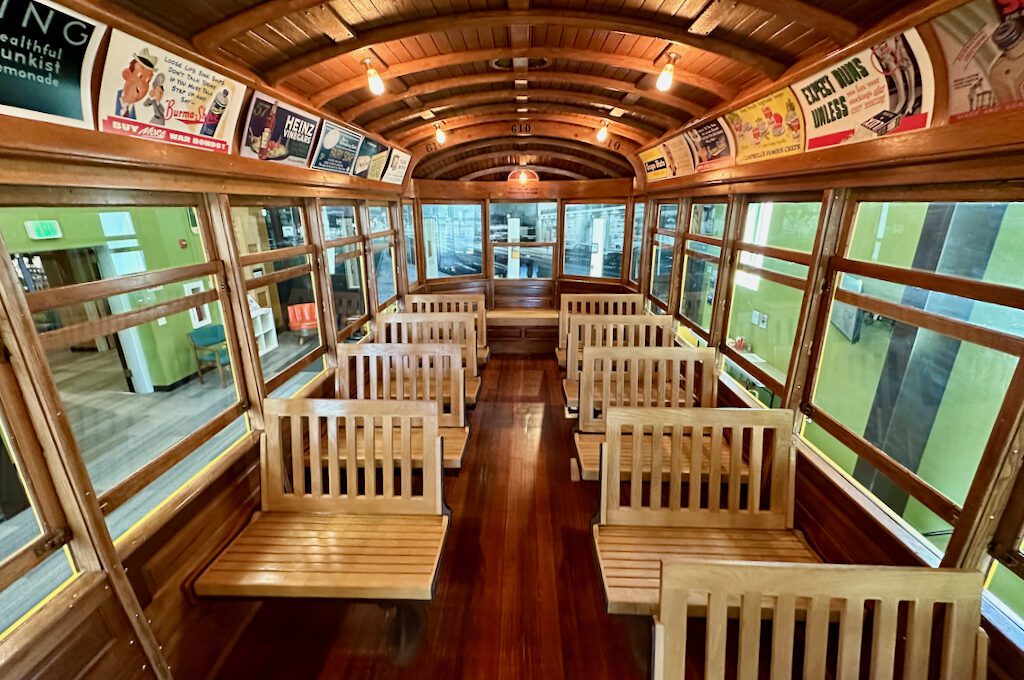
It takes you back to a different area of transportation and we were able to walk inside and take a seat. Before you depart, make sure to take a moment to try on the conductors outfit and give the trolley a ring or two.
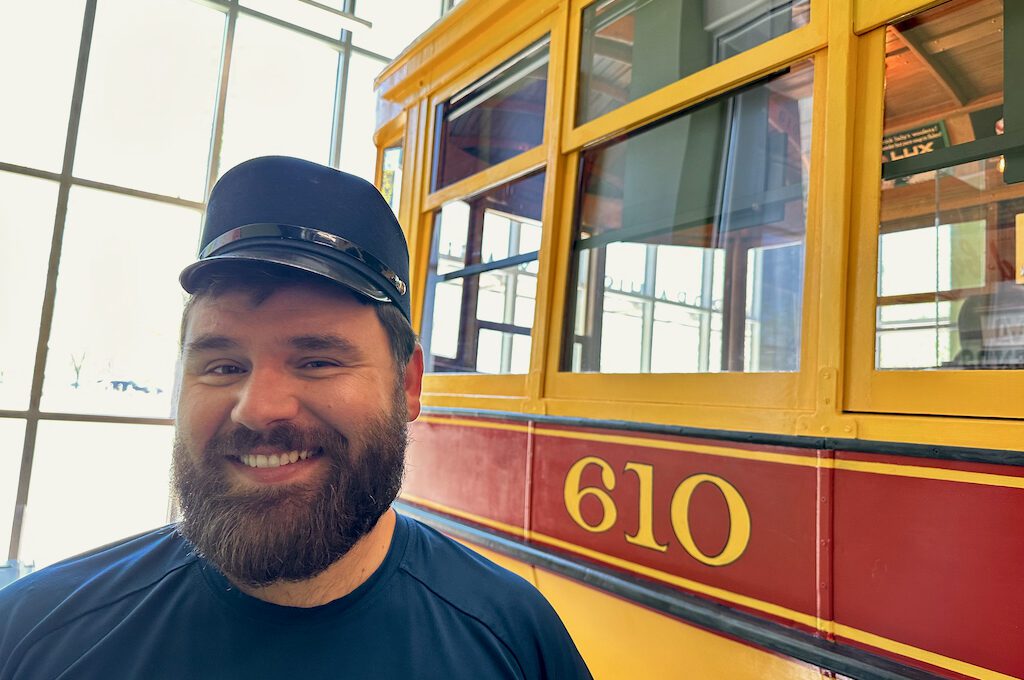
We then wrapped up the museum visit with a quick stop to the gift shop where we came away with some local honey from Lockhart Honey Farms. Check out all of the shelves because you have a lot of different options to choose from.
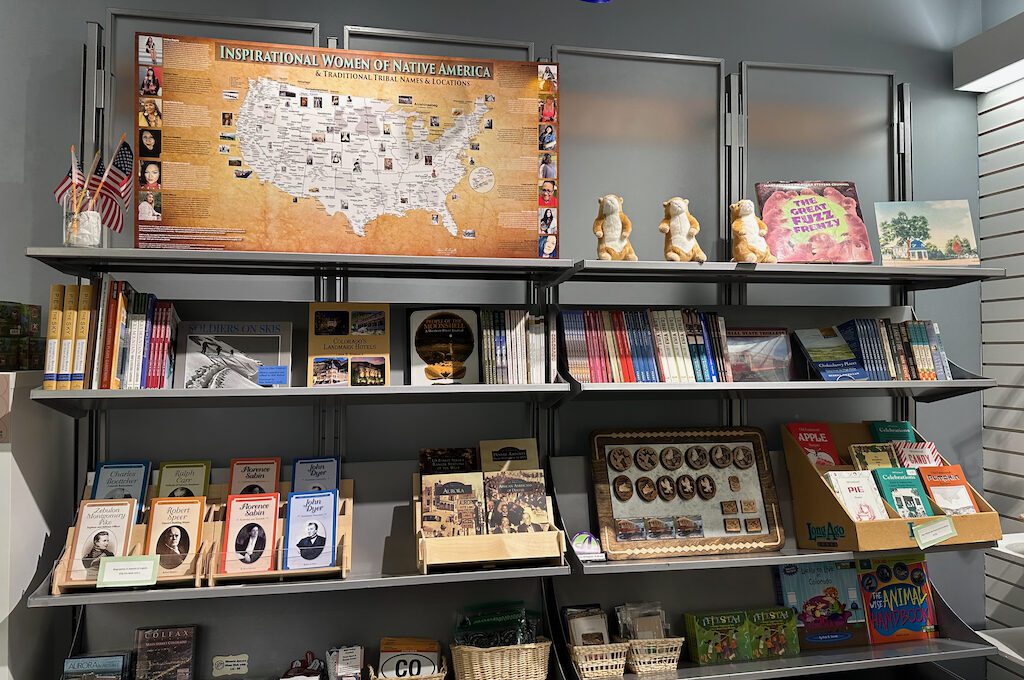
I should mention that there is also a 30 minute film you can watch on the development of Aurora from “town” to “city” but we didn’t quite have the time to make that so we had to save that until next time.
However, if you want to, you can request for the museum to restart the movie so that you can begin watching it from the beginning (since it plays on a loop).
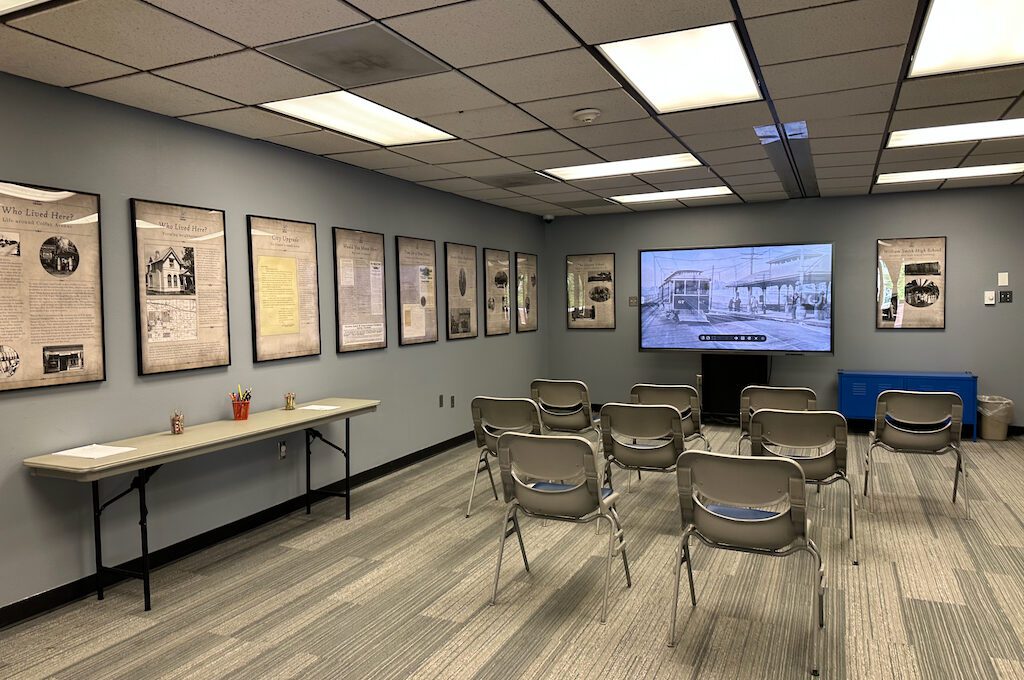
Overall, it was a really great visit and I found it very interesting to learn about this community which is significantly larger than I ever imagined.
7/20 Memorial & Reflection Gardens
After visiting the Aurora History Museum, we made our way over to the nearby Reflection Garden located just across the street.
You could walk from the same parking lot you parked in for the museum or look for a parking spot a little bit closer to cut down on your walking time.
Once we arrived at the gardens, we followed the meandering sidewalks checking out various vegetation and other exhibits until we arrived at the 7/20 Memorial.
It’s a beautiful memorial adorned with 83 graceful cranes, known as the “Ascentiate” sculpture.
It was dedicated on July 27th, 2018 and the cranes honor the 13 lives taken and 70 wounded during the Aurora Theater shooting.
Beyond commemorating these individuals, it stands as a testament to the incredible strength and resilience displayed by the first responders and community members. It’s a heartfelt tribute that reminds us of the indomitable spirit that emerges from even the darkest of times.
We took some time to pay our respects for those who lost their life, which is something we had just done a few days prior when we visited the Columbine Memorial.
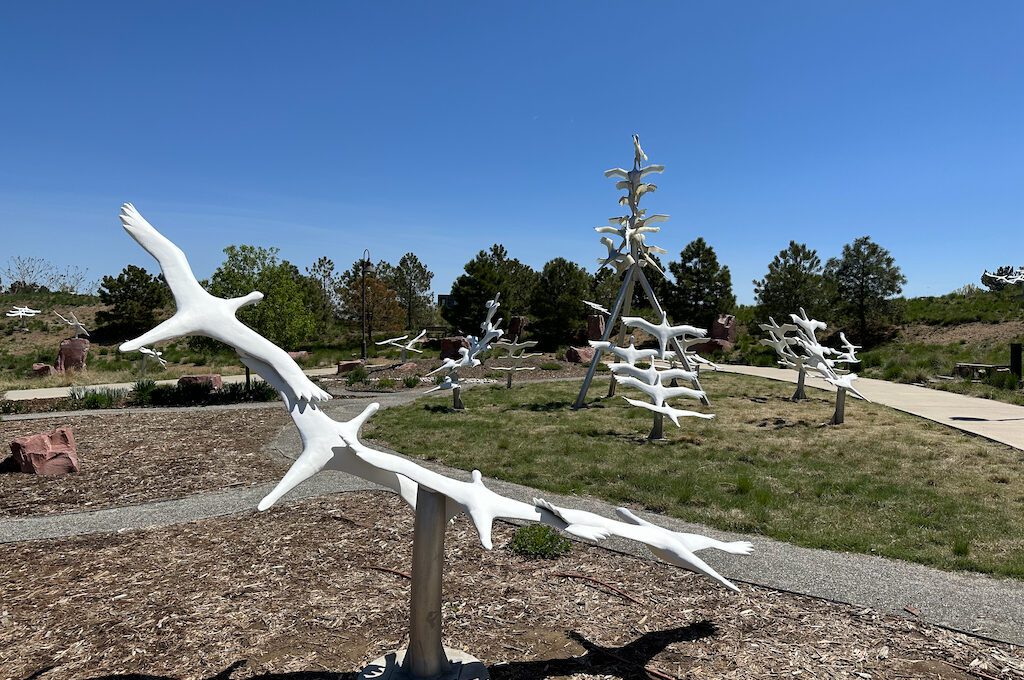
Final word
The museum is very well done and worth a visit if you are ever on the east side of Denver. I thought it was really interesting to learn about the beginnings of this area and had no idea about the depth of military history. After you check out the museum, I also recommend you to take a moment to reflect at the “Ascentiate” sculpture.
Daniel Gillaspia is the Founder of UponArriving.com and the credit card app, WalletFlo. He is a former attorney turned travel expert covering destinations along with TSA, airline, and hotel policies. Since 2014, his content has been featured in publications such as National Geographic, Smithsonian Magazine, and CNBC. Read my bio.

